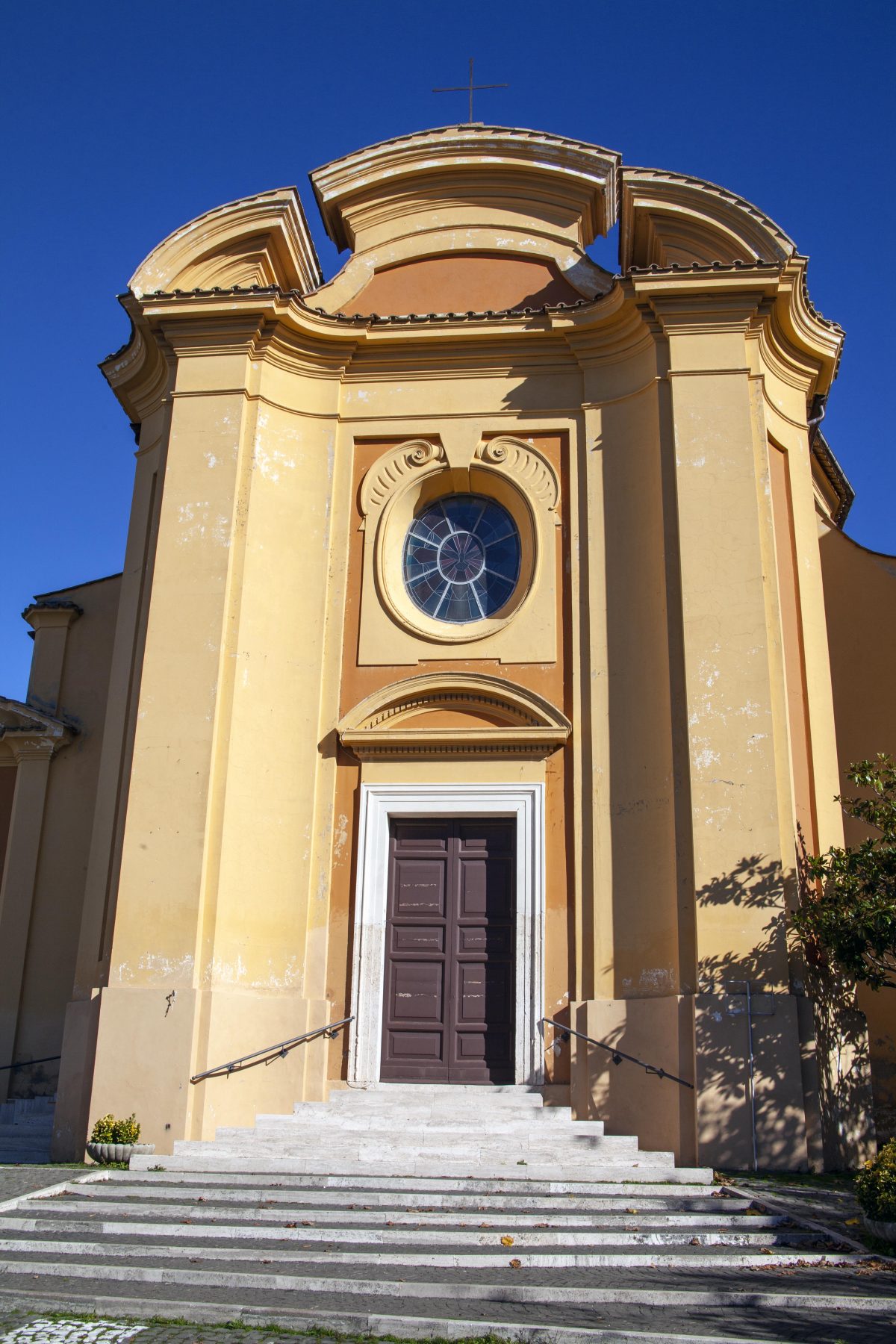This event led to a slowdown in the construction, as the successor, Cardinal Giovanni Battista Rospiglioni, reluctant to build the Church, did not grant the funds necessary for its completion. It was Cardinal Enrico Benedetto Stuart, Duke of York, who obtained the resumption of the works from the Congregation of the Council, to which he also contributed with his own funds.
Accepting the requests of the Duke of York, Princess Maria Eleonora Caffarelli Rospigliosi obtained from Pope Clement XVI permission to use the fund established by Duchess Maria Camilla, to finish the construction of the religious building.
Following the consecration of the church, the Pallavicini family claimed the right of ownership (jus patronatus) from the Bishop of Frascati, for having participated in the construction costs. But the long diatribe ended with the assignment of the property to the bishops of Frascati.
During the Second World War the citizens of Colonna made a vow to the Blessed Virgin asking for protection from the bombings and promised in return to renovate the church. Since only one bomb had fallen on the town, causing only one victim by the end of the conflicts, the promised was kept and the citizens began the renovation work, and the frescoes were carried out by painter Duilio Cambellotti.
The artist is known for the lunette with the polychrome cross, the Annunciation scene in the central conch, decorations of crosses formed by vineson the sides and fortwo paintings, one of San Nicola Protettore di Colonna (Patron Saint of Colonna) and the other la Tempesta Sedata da San Nicola di Bari(The Storm calmed by St. Nicholas of Bari), representing the Saint’s miracle.
Inside you can admire important paintings like the one in the apse by Carlo Ciappini of 1759, which represents the Virgin with Child supported by angels;on her right San Nicola in pontifical clothes pointing to her; on her left San Filippo Benizi embracing the cross.
On the left of the high altar is a wooden statue of Saint Nicholas, Bishop of Myra, with a miter and crosierand with three children miraculously blessedat his feet. The first right side chapels is dedicated to the Immaculate Conception and the second right hand chapel to the Santissimo Salvatore, paintings by the famous Maratta.
We can also see the Holy water font on the left side of the entrance, made from a shell-shaped basin from the old church. The rose window at the entrance has been added recently.


 Visit Castelli Romani
Visit Castelli Romani 

